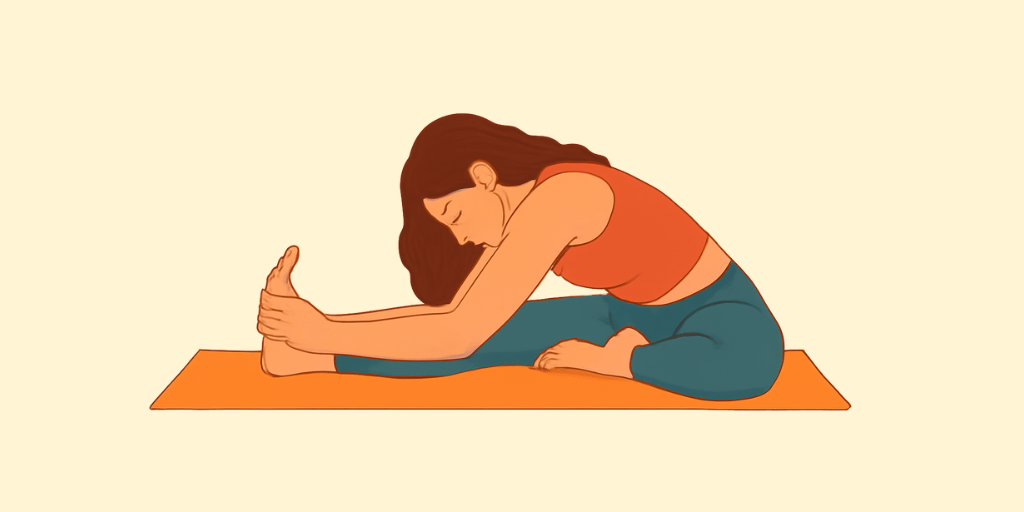Sanskrit Name: जानुशीर्षासन
English Name: Head-to-Knee Forward Bend
Description:
Janusirshasana, commonly referred to as Head-to-Knee Pose, is a seated forward bend in yoga that effectively stretches the legs, hips, and back. The name comes from Sanskrit, where “Janu” (जानु) means knee, “Sirsha” (शीर्ष) means head, and “Asana” (आसन) means pose. Thus, Janusirsasana translates to Head-to-Knee Pose, illustrating the movement of bringing the head toward the knee during the forward bend. This traditional yoga posture is often included in Hatha Yoga and serves as a preparatory pose for more advanced forward bends and deeper stretches. Its practice is linked to Pranayama (breathing exercises) and meditation, aiding in enhancing mental focus and tranquility. Additionally, this pose is beneficial for relieving lower body tension, particularly for individuals who sit for long durations, as it helps open the hips and stretches the hamstrings. Over the years, Janusirsasana has established itself as a fundamental pose in both traditional and contemporary yoga practices, appreciated for its adaptability and the profound stretch it provides.
Benefits:
- Improved Flexibility: This asana enhances flexibility in the hamstrings, hips, and spine, promoting overall mobility.
- Stimulates Digestive Organs: The forward bend aids in stimulating the abdominal organs, improving digestion and alleviating issues like constipation.
- Calms the Mind: Practicing Janusirshasana helps to soothe the nervous system, reducing stress and anxiety, and promoting a sense of calm.
- Strengthens the Back: It helps strengthen the back muscles, improving posture and alleviating back pain.
- Enhances Focus: The concentration required in this pose aids in enhancing mental focus and clarity.
- Therapeutic for Sciatica: Regular practice can help relieve sciatica symptoms by stretching and strengthening the lower back and hamstrings.
- Improves Circulation: The pose encourages better blood flow to the legs and lower body, promoting overall circulation.
Medical Conditions(Relief):
Janusirshasana, or Head-to-Knee Pose, can be beneficial for various medical conditions. It aids in improving flexibility in the spine and hamstrings, which can alleviate lower back pain. Additionally, this asana can enhance digestion and relieve stress, making it helpful for anxiety and digestive disorders. It also promotes better circulation, which can support overall cardiovascular health. Practicing this pose regularly may help individuals with sciatica by stretching the affected areas, thus reducing discomfort.
Medical Conditions(Avoid):
- Knee Injuries: Individuals with any acute or chronic knee injuries, such as ligament tears or severe arthritis, should avoid this pose to prevent further strain or damage.
- Back Problems: Those with herniated discs, severe lower back pain, or any spinal issues should refrain from this asana, as it can exacerbate discomfort or injury.
- Hamstring Injuries: People recovering from hamstring strains or tears should avoid this pose, as it requires significant hamstring flexibility and can lead to further injury.
- Pregnancy: Pregnant individuals should avoid this pose, especially in later trimesters, as it may put undue pressure on the abdomen and pelvis.
- Recent Surgery: Anyone who has undergone recent abdominal or hip surgery should avoid this pose until fully healed, as it can strain the surgical area.
- Severe Sciatica: Those experiencing severe sciatica or nerve pain in the legs should avoid this pose, as it can aggravate the condition.
- Infections or Inflammation: Conditions like tendinitis or any acute inflammation in the legs or lower back should warrant avoidance of this asana.

